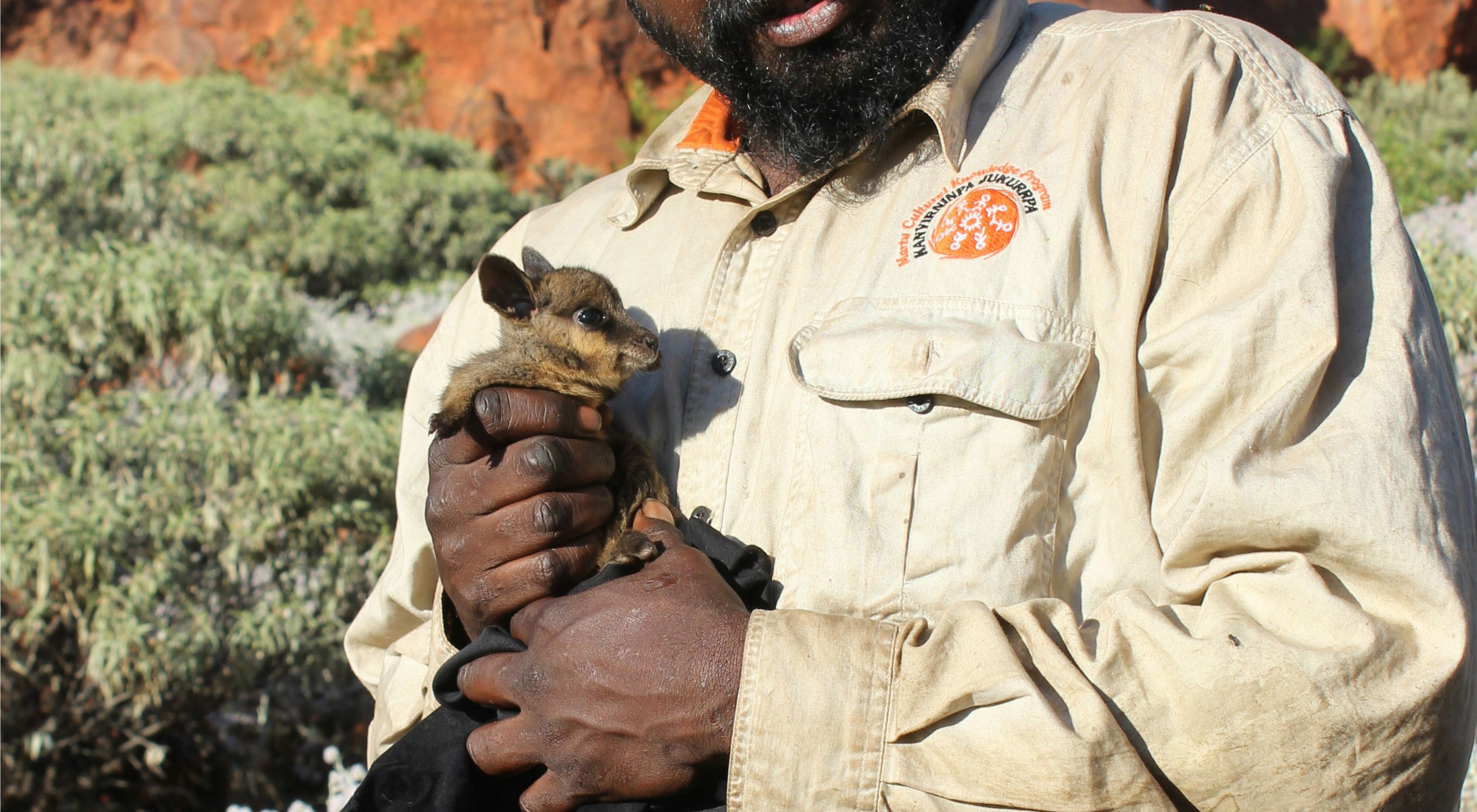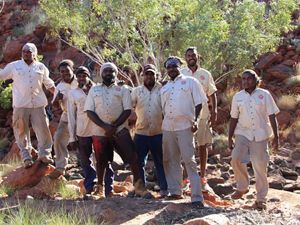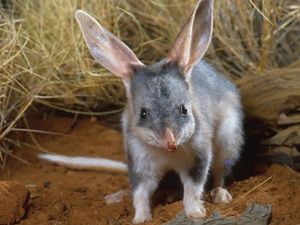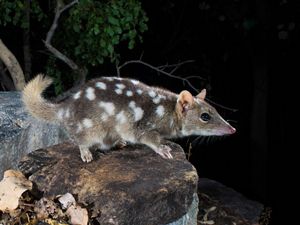Beautifully adapted to life in the rocky outcrops and rugged cliffs of Australia, rock-wallabies are shy marsupial gymnasts. Watching them leap and bound among the boulders has sadly become increasingly unlikely because many of the 16 species of rock-wallabies are threatened with extinction.
The Black-flanked Rock-wallaby is one such endangered species. It was once widespread across many parts of Western Australia, South Australia and the Northern Territory. The clearing of its habitat, changes to fire patterns and, most devastating of all, introduced foxes and cats, all threaten its continued existence. It only survives today in small isolated populations within its former range.

That’s why we’re proud to have been a part of an ambitious rock-wallaby translocation project on Martu Country in the Western Desert led by Kanyirninpa Jukurrpa (KJ) and the WA Parks and Wildlife Service, with the support of BHP.
In 2012, the only known population of Warru (as Martu people call them) on Martu Country was found at Kaalpi (the Calvert Range) in the Little Sandy Desert. Hanging on in just one small area made them highly vulnerable to drought, feral predators and bushfires.
In 2013, 26 Warru were moved from Kaalpi to the relocation site at Pinpi (Durba Hills).
Check out this video about the project
KJ’s Martu rangers and Parks and Wildlife officers fitted the bigger animals with temporary radio collars so that their locations could be tracked using satellite telemetry equipment. Remote sensor cameras were distributed around the Pinpi area to also monitor the Warru, especially those without collars. Since relocation they are thriving and breeding in both locations, a very positive sign.
More recently, small populations of Warru were discovered in hills close to the Parnngurr Martu community, 300 kilometres east of Newman, in the Little Sandy Desert. This brings the total number of known populations on Martu lands to eight. The future for this species on Martu Country now looks a lot brighter.
Get regular email updates and news
Sign up to learn about the work we do through project updates, news, quizzes and other great information.



